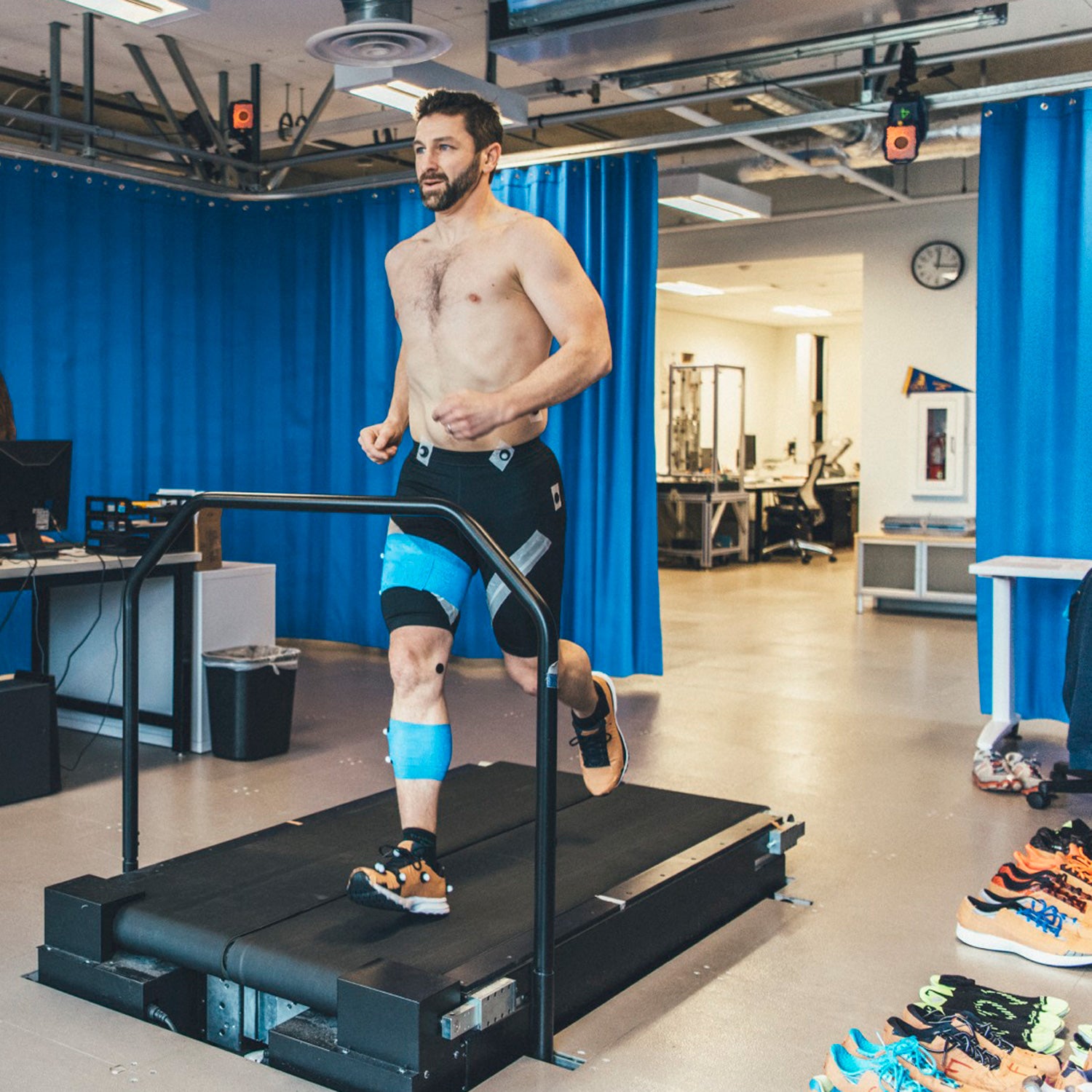At the 2012 U.S. Olympic Trials, Iain Hunter, a biomechanist from Brigham Young University, used a high speed video camera to record and compare foot strike patterns among runners competing in the men’s 10,000-meter final. , which looks like a MoMA installation curated by leg fetishists, provides a significant contribution to the ongoing debate about whether or not there is a “right” way to run. When examining the strike patterns of 24 of the best runners in the country side by side, Hunter found that all three categories–forefoot, mid-foot, and heel-strikers–were represented. It appeared that even among the cream of American distance runners there was considerable discrepancy in form, which suggests that perhaps we needn’t all aspire to run like Galen Rupp. (Although he did win the race, so . . .)
This idea is at the core of a new shoe-fitting initiative from Brooks called Run Signature.
The concept is relatively straightforward. Although the general mechanical structure of knee and ankle joints is universal, there is endless variation in the makeup of these joints–from the flexibility of ligaments to the very shape of one’s bones. These specific, and highly individual, characteristics will determine the way that your body moves.
“The way your body wants to move, we call that your ‘preferred motion path’ and that preferred motion path is built around the geometry of your joints,” says Eric Rohr, senior biomechanical engineer at Brooks and one of the architects of Run Signature.
The promise of Run Signature, and what Brooks is touting as “revolutionary,” is to provide unparalleled insight into your individualized “right way to run,” by means of a more sophisticated version of the stride analysis test you can get at your local running store.
Here, in brief, is how Run Signature works:
Before they do any running, customers perform a knee-bend to mimic the angle the joint will make during a run (roughly 40 degrees). This is to establish a baseline movement before the additional stress of running is placed on the joint. Customers then run on a soft-surface treadmill in their socks. Rather than just considering pronation (i.e. rear foot eversion/rotation) tendencies, Run Signature takes both knee and ankle motions into account and, crucially, analyzes the degree to which a customer’s running motion deviates from their baseline knee-bend. Runners with little or no deviation are recommended neutral-style running shoes, while those with greater deviation are steered towards support models.
Shoe recommendations in the support category will affect pronation, but the point of Run Signature is to view these effects in the context of the holistic runner profile.
“What’s also important is that, as you affect the pronation, you really want to understand how that affects the knee. Run Signature starts by understanding how the knee is moving. If the knee is stable, then we have a lot of opportunities to do different things with the foot,” says Rohr. “But when the knee is not stable, when it’s a little bit different in running than in the knee bend, that’s when we really look at the shoe opportunities to influence the foot that then influence the knee. So the goal, really, is to keep the knee happy.”
The “shoe opportunities” available from Brooks are, of course, finite. It remains to be seen how a shoe-finding app that markets itself as being meticulously tailored to individual runner needs can be squared with the reality that the wares of major shoe companies must be mass-produced. The more informed runners become about their idiosyncrasies, i.e. their “Run Signature,” the more a need for hyper-specialized running shoes might arise. Just imagine: a 3D-printed shoe for your specific bone structure.
Then again, it’s not like anyone who visits even a moderately-sized running store these days is going to feel like they’re buying groceries in the USSR. Lack of choice is not really the problem. If Run Signature feedback can help runners better navigate the overwhelming selection in most shoe stores, all the better.
Unfortunately, getting a chance to try Run Signature might be the real challenge. Having debuted at the Boston and London Marathon expos earlier this year, Run Signature’s only permanent brick-and-mortar location at present is the Brooks Trailhead flagship store in Seattle. However, Run Signature will be available at signature events as part of an ongoing mobile tour. Stop one is the Steamboat Springs Marathon next month. Other stops include: Bellin Run in Green Bay, Wisconsin, (June 10-11); Grandma’s Marathon in Duluth, Minnesota, (June 16-18); and the Slacker Half Marathon in Georgetown, Colorado (June 24-25). Check for further tour details.


